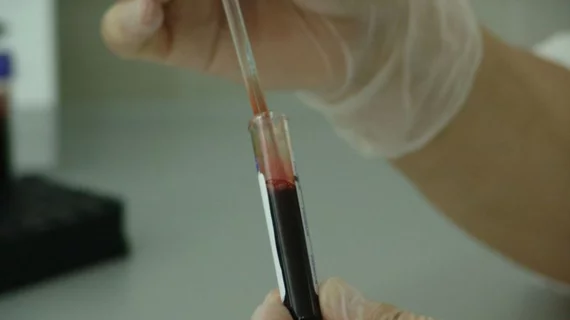Natriuretic peptide-guided therapy falls flat in improving HFrEF outcomes
Using a biomarker target to guide the treatment of patients with heart failure with reduced ejection fraction (HFrEF) resulted in higher healthcare costs without significant improvements in quality of life compared to standard treatment, according to an analysis from the GUIDE-IT study published in the Journal of the American College of Cardiology.
The study planned to enroll 1,100 patients with ejection fraction below 40 percent, a heart failure event within the past year and N-terminal pro-B-type natriuretic peptide (NT-proBNP) levels above 2,000 pg/ml at baseline. Patients were randomized 1:1 to treatment to an NT-proBNP target below 1,000 pg/ml or to treatment with guideline-recommended medical therapy at doses established in previous clinical trials.
“The expectation, based in part on the prior work, was that the biomarker-guided arm would substantially improve clinical and quality-of-life (QOL) outcomes and possibly even lower net costs by reducing clinical decompensations leading to hospitalizations and other expensive care,” wrote lead author Daniel B. Mark, MD, MPH, with Duke Clinical Research Institute, and colleagues.
But that’s not what happened. The trial was stopped early because the biomarker-guided treatment failed to show benefit—as the primary composite endpoint of heart failure hospitalizations and cardiovascular mortality was similar in the two arms, and secondary endpoints were neutral as well.
Still, Mark et al. sought to study the QOL and economic outcomes associated with the two treatment strategies in another analysis, which included the 994 patients who were randomized before the trial was halted.
Kansas City Cardiomyopathy Questionnaire (KCCQ) scores improved by an average of 11 points—on a scale of 0 to 100—over the first three months of treatment, but there were no significant differences between groups throughout follow-up. Likewise, both groups made five- to six-point gains in the Duke Activity Status Index, which measures cardiac-related functional status on a scale of 0 to 58.2. Again, there were no significant differences between groups.
“The QOL findings of no difference between the 2 treatment strategies reported in this paper are concordant with the lack of efficacy for biomarker-guided therapy relative to guideline-based medical care reported earlier for the major clinical endpoints,” the authors noted.
However, costs were substantially higher in the biomarker-guided treatment arm, averaging about $13,000 higher per patient during a median follow-up of 15 months. But the researchers noted those totals were affected by a few high-cost outliers—five patients in the biomarker-guided arm required left ventricular assist devices compared to just one in the standard therapy group, and three required dialysis for acute renal failure compared to zero patients in the control arm.
But even with winsorized adjustment—taking the highest-cost patients and setting them at the 95th percentile of the pooled cohort—the researchers found the biomarker-guided treatment strategy was still associated with costs an average of $5,919 higher.
“Guiding therapy in patients with chronic HF and reduced ejection fraction by measurements of plasma NT-proBNP does not improve clinical or patient-reported outcomes and may increase the cost of care,” Mark and coauthors wrote. “Additional studies are needed to determine whether selective application of a biomarker-guided strategy might have greater impact on outcomes when used in primary internal medicine practice, general cardiology practice, or other settings less specialized in managing patients with advanced HF.”
The authors noted most of the cost differences came from inpatient hospitalizations for heart failure, rather than outpatient clinic visits. The mean number of days spent in the hospital was 14.5 for patients in the biomarker-guided arm and 10.7 in the usual care group.
Also, despite evidence of more medication changes in the biomarker-guided patients, the proportion of patients taking the recommended doses of proven heart failure drugs was similar between groups.
“These data raise the important possibility that GUIDE-IT was ‘negative’ because study investigators were not aggressive enough in their pharmacotherapy responses to biomarker feedback,” Mark et al. wrote. “In addition, as reported previously, rates of adverse events were low and equivalent in the 2 arms, suggesting that patient intolerance was not a major limiting factor in the biomarker-guided arm.”
The authors said early termination of the study could have influenced the analysis, along with its unblinded design. They also noted the researchers participating in the study had “extensive experience” treating advanced heart failure, so results may have differed with less experienced clinicians implementing the trial protocol.

